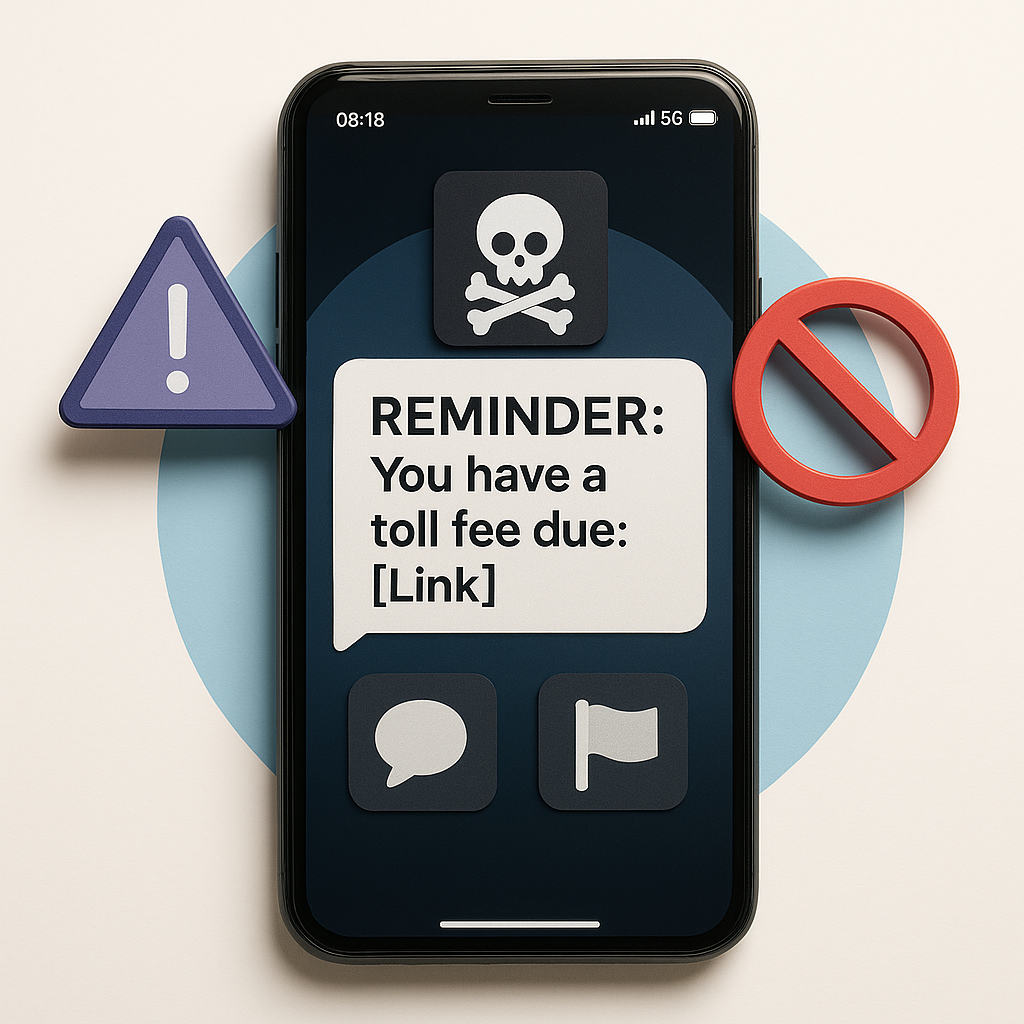If you’ve received text messages claiming you owe a toll fee or have an outstanding DMV ticket, you’re not alone. These SMS scams are increasingly common — and increasingly convincing. While messages from out-of-state agencies are easier to spot, the ones that appear to come from your own state’s toll or motor vehicle department can be much harder to recognize.
How These Text Message Scams Work
Scammers use urgency and fear to pressure you into clicking a link. These links lead to fake websites that look like official government pages. From there, you’re asked to enter personal information or make a payment — handing over sensitive data to cybercriminals. Real toll agencies and DMVs do not request payments via unsolicited text messages, especially with suspicious URLs or short links.
How to Recognize a Fake Toll or DMV Text
Here are a few red flags to watch for:
- The message urges immediate action to avoid penalties.
- It contains strange or shortened links (e.g., bit.ly, tinyurl).
- The sender’s number is a random or unofficial-looking number.
- The message includes grammatical errors or odd formatting.
Always verify by going directly to the official agency website or calling their support line.
How to Block and Report SMS Scams on iOS and Android
If you receive a suspicious message, don’t click any links. Instead, follow these steps:
On iPhone (iOS):
- Tap the sender’s name at the top of the message.
- Scroll down and tap Report Junk.
- Tap Block this Caller to prevent future messages.
On Android:
- Press and hold the message.
- Select Report spam or Block.
- You can also forward the message to 7726 (SPAM) to report it to your mobile carrier.
Spread the Word
These scams rely on catching people off guard. Staying aware — and helping others stay informed — is the best defense. Share this post with friends and family, and let’s shut down text message fraud one blocked number at a time.

